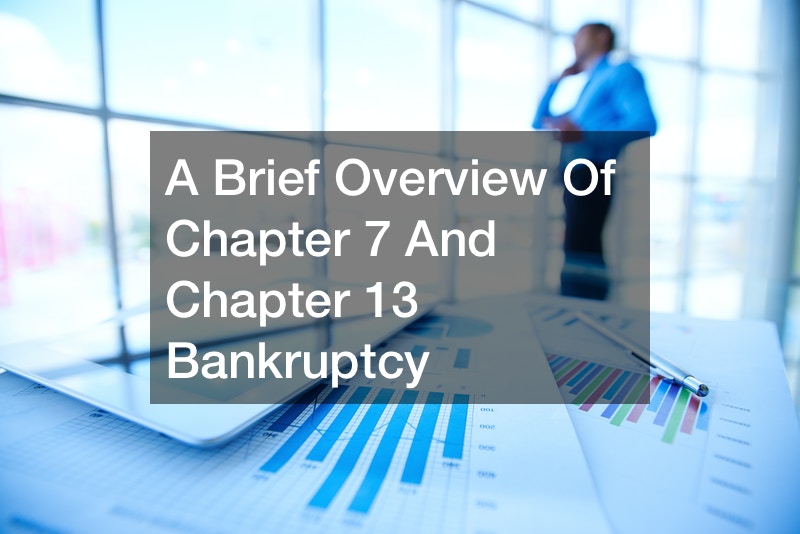
A Brief Overview of Chapter 7 and Chapter 13 Bankruptcy

Chapter 13 bankruptcy is a type of bankruptcy whereby an individual seeks to have the time extended on their debt repayments and the protection of their assets from being foreclosed or repossessed. This usually occurs when an individual has defaulted in paying their debts to creditors due to financial difficulties. After being reviewed by a chapter 13 court, the petition of the individual either gets rejected or accepted. If accepted, a repayment plan gets set up, where the individual commits to paying their debt by installment until it’s finished.
The main goal of filing for a chapter 13 bankruptcy is to get exempted from repaying some portions of debts or relief from them. You may find yourself asking, “What do I need to file bankruptcy chapter 13?” For you to file for this type of bankruptcy you will need to present the court with valid documents portraying ownership of your assets and also have a regular income. As to whether does chapter 13 bankruptcy stop foreclosure, the court will prevent creditors from repossessing or foreclosing your property should your petition get accepted.
Regardless of which type of bankruptcy you choose to file for, it will not entirely absolve you from repaying debts. After chapter 13 discharge should not be confused as being absolved from repaying debts because it entails the court relieving you from paying the remainder of your debt and barring creditors from seeking payments from you.

Are you planning to file a petition for a Chapter 7 or Chapter 13 bankruptcy? Were you aware that when you employ the services of an attorney for this process, the success rate for Chapter 7 bankruptcy claims exceeds 95%? When an attorney’s services are employed for Chapter 13 claims, the success rate is 55%.
Business bankruptcies in 1980 comprised approximately 13% of all bankruptcy cases. In 2014, the most bankruptcy filings came from California, Florida, Illinois, Georgie, and Ohio. Of the total number of bankruptcies filed in the United States at that time, 97% were personal and three per cent were business.
Currently, business bankruptcies represent approximately three percent of all bankruptcies. There are over 1.5 million people, on average, that petition for bankruptcy every year, according to U.S. Bankruptcy Court statistics.
There are several reasons why an individual may want to file for bankruptcy. According to a recent Harvard University study, 62% of the United States’ personal bankruptcies are due to medical expenses. Furthermore, approximately 15,000 bankruptcies are filed every year due to student loans; this comprises almost one percent of bankruptcies in the United States.
A business may choose to file bankruptcy, according to the United States Courts, because this process can help them pay off their debts and start over. When a business is unable to pay their debts and is experiencing financial trouble, filing bankruptcy will usually involve liquidating their assets to pay creditors. In addition, these businesses may also create a repayment plan with the assistance of the bankruptcy court.
One of the differences between a Chapter 7 and a Chapter 13 bankruptcy case, according to United States Courts, is that a repayment plan does not need to be filed for a Chapter 7 bankruptcy case. Instead of a repayment plan, and in keeping with provisions of the Bankruptcy Code, a bankruptcy trustee will collect and sell any nonexempt assets. The proceeds from these sales will be used to pay the filer’s creditors.
The United States Courts also states that when an individual files for Chapter 7, they may lose property. This is due to liens and mortgages that may be pledged to creditors.
When filing for bankruptcy, there is a $335 filing fee for Chapter 7 cases. The fee is $310 for a Chapter 13 case. While an average Chapter 7 may cost from $1,500-to-$3,000, a Chapter 13 case may cost more due to additional financial considerations.